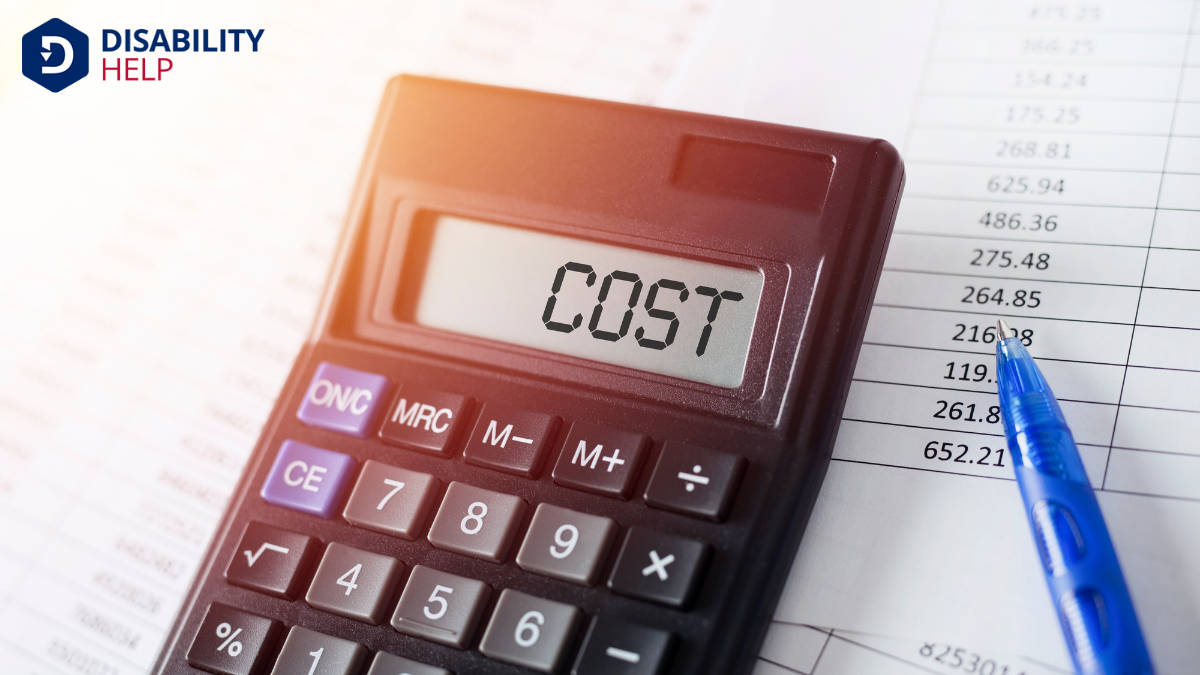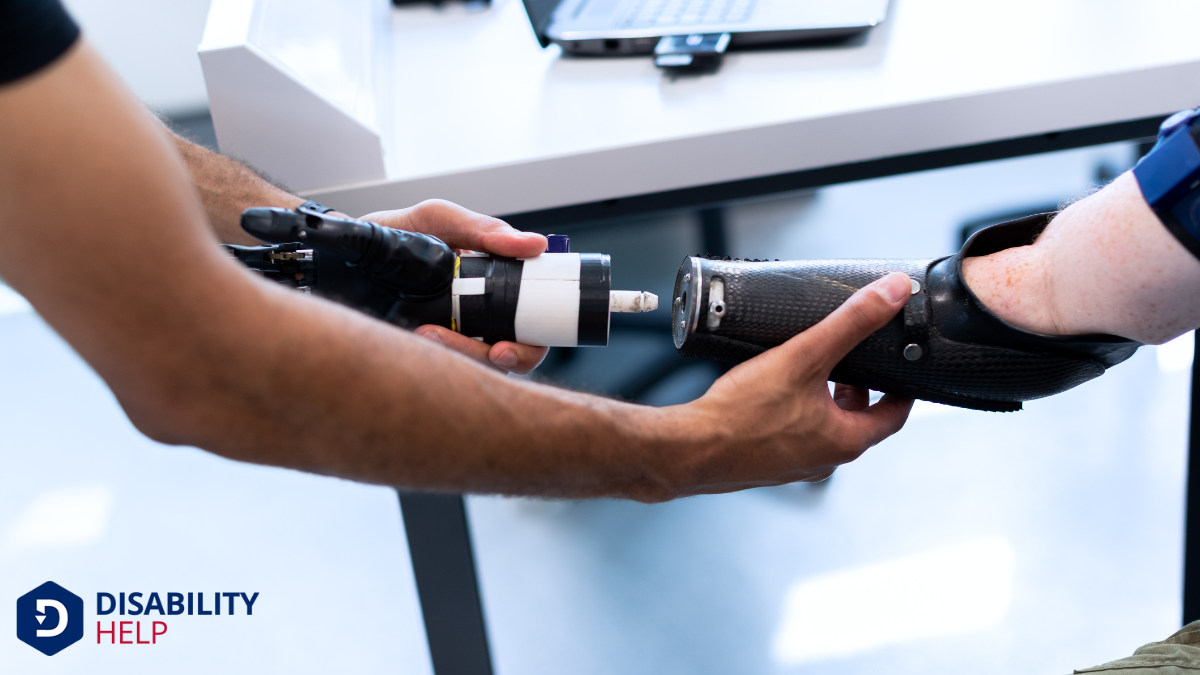Let's explore the financial landscape of assistive devices together. We'll examine how costs vary widely depending on the type, features, and materials used. From mobility aidsDevices designed to help individuals move around more easily, such as canes, walkers, or wheelchairs... to communication tools and hearing aids, each category presents a unique financial puzzle. Understanding these nuances is key to making informed decisions. But how do we navigate this complex market and find the best options for our needs and budget? Let's discover the answers.
Key Takeaways
- Basic mobility aids like canes and walkers are generally affordable, with prices ranging from $20 to $200.
- Wheelchairs vary widely in cost, from $100 for basic models to over $3,000 for advanced, customized options.
- Communication devices range from $100 for simple boards to $15,000 for advanced speech-generating systems.
- Hearing aids cost between $1,000 and $5,000 per pair, with prices influenced by features and technology.
- ProstheticsArtificial devices that replace missing body parts, such as limbs, often used after amputations. and orthoticsCustom-made devices that support, align, or improve the function of body parts, such as braces or sh... can range from hundreds to thousands of dollars, depending on customization and materials used.
Understanding the Range of Assistive Devices
Maneuvering the world of assistive devices can seem intimidating at first, but understanding the range available is essential for making informed decisions.
We’ve got a variety of aids designed to enhance mobility, communication, and daily activities. Mobility aids like canes, walkers, and wheelchairs help us move around more easily. Communication devices, including speech-generating tools, assist those with speech impairments. Daily living aids, such as grabbers and adaptive utensils, support independence in routine tasks.
Each category has diverse options tailored to individual needs and preferences. By exploring these categories, we empower ourselves to choose devices that best fit our unique lifestyles.
Let’s not shy away from asking questions and seeking advice to navigate this landscape effectively.
Factors Influencing the Cost of Mobility Aids

When we consider the cost of mobility aids, material and design choices play a significant role.
The use of lightweight, durable materials can increase costs but improve comfort and functionality.
Additionally, technology and extra features, like smart sensors or ergonomic enhancements, often add to the price but offer valuable benefits for users.
Material and Design Choices
While exploring the factors that influence the cost of mobility aids, we must consider both material and design choices. The materials used can greatly impact the price. Lightweight alloys like titanium and carbon fiber offer durability and ease of use but come with a higher price tag compared to standard aluminum or steel.
These advanced materials enhance user comfort and mobility, justifying their cost.
Design choices also play an essential role. Customizable features, ergonomic handles, and aesthetic options can increase costs. A sleek, modern design might appeal to some, but it requires additional resources and technology.
Simple, functional designs might be more budget-friendly. By understanding these aspects, we can make informed decisions that balance cost with the necessary features for our individual needs.
Additional Features and Technology
As we explore the domain of additional features and technology in mobility aids, it's clear that innovation plays a pivotal role in influencing costs. These enhancements drive both functionality and price.
When we consider a mobility device, it's not just about getting from point A to point B. It's about the journey and comfort that technology can provide.
Let’s envision some features that can elevate these devices:
- Smart navigation systems that adaptA grassroots disability rights organization in the U.S. that focuses on promoting community-based se... to our surroundings in real-time.
- Adjustable seating for personalized comfort and posture support.
- Bluetooth connectivity for seamless integration with our smartphones.
- Advanced battery systems offering longer usage between charges.
These features, while impressive, add complexity and inevitably influence the overall cost.
But for many, these enhancements make a significant difference in daily life.
Pricing Guide for Communication Tools
Charting the world of communication tools can feel overwhelming, but we're here to simplify it by breaking down the costs.
With options like speech-generating devices, text-to-speech apps, and communication boards, prices can vary widely. Basic communication boards might set us back $100 to $200, offering a cost-effective solution.
On the other hand, advanced speech-generating devices, designed for more complex needs, can range from $1,500 to $15,000.
Text-to-speech apps, suitable for smartphones and tablets, often cost between $10 and $300, depending on features. Subscription-based services might charge monthly or annually, adding to long-term expenses.
When selecting the best fit, we should consider both immediate costs and ongoing expenses. Our goal is to match the right tool to individual needs without breaking the bank.
Cost Analysis of Hearing Aids and Related Technologies
When exploring the world of hearing aids and related technologies, we quickly realize how varied their costs can be. Prices depend on features, brand, and technology level.
Let's investigate what contributes to these costs:
- Basic hearing aids: These typically offer essential amplification and start around $1,000 per pair.
- Advanced digital aids: Featuring connectivity options like Bluetooth, they can range from $2,500 to $5,000.
- Custom-molded earpieces: Designed for comfort and fit, adding several hundred dollars to the total.
- Assistive listening devices: Complementary tech like TV streamers or remote microphones, usually costing $200 to $500.
Each option serves different needs and preferences, enabling us to find the right balance between functionality and budget.
Understanding these factors helps us make informed choices in our hearing journey.
Financial Considerations for Prosthetics and Orthotics

Maneuvering the financial landscape of prosthetics and orthotics can be intimidating due to their significant costs, but understanding key factors helps us make informed decisions.
First, we need to evaluate the type and complexity of the device. Custom-made prosthetics are usually more expensive than off-the-shelf options.
Next, the materials used impact the price—lightweight, durable materials tend to cost more.
We should also account for the fitting process, which might include multiple adjustments and follow-up visits.
Maintenance and repair costs can add up over time, so let’s factor those in too.
Finally, technological advancements can drive prices up but often enhance functionality.
Being aware of these aspects empowers us to balance quality and budget effectively.
Exploring Funding Sources and Insurance Options
While traversing the complex world of prosthetics and orthotics, understanding funding sources and insurance options is essential to managing costs effectively.
We often face intimidating price tags, but there are ways to ease this financial burden. Let’s explore some avenues that might help:
- Private Insurance: Coverage often varies, so reviewing and understanding policy details is vital.
- MedicareA U.S. federal health insurance program for people aged 65 and older, and for some younger people wi.../Medicaid: These government programs can cover certain devices, but eligibility and coverage limits apply.
- Veterans Affairs (VA)A U.S. government agency that provides services and benefits to military veterans, including those w...: Veterans may have access to specialized funding and services.
- Nonprofit Organizations: Many offer grants or financial aid specifically for assistive devices.
Tips for Making Cost-Effective Decisions
Maneuvering the array of choices for assistive devices can be overwhelming, so let's focus on strategies for making cost-effective decisions.
First, we should prioritize our essential needs over optional features. By identifying what we truly require, we can avoid overspending on bells and whistles we might never use.
Next, let's explore refurbished or gently used devices, which often provide the same functionality at a lower cost. Checking reviews and ratings can help us determine a product's reliability and suitability, ensuring we don't waste money on ineffective devices.
Additionally, we should compare prices across different vendors and consider online marketplaces for potential savings.
Don't hesitate to reach out to support groups or professionals for recommendations tailored to our specific needs. These steps can help us make informed, budget-friendly decisions.
Conclusion
In summary, we've explored the diverse costs of assistive devices, from mobility aids to advanced communication tools and hearing aids. It's important for us to take into account factors like customization, technology, and materials when evaluating these investments. By understanding the price ranges and exploring funding sources, we can make informed, cost-effective decisions that suit our needs. Let's remember that insurance options might offer support, helping ease the financial burden while enhancing quality of life.






